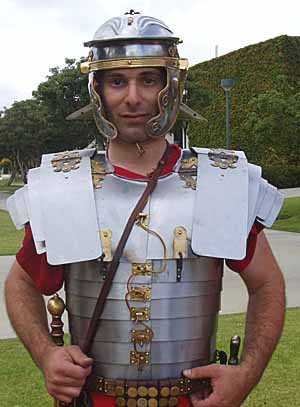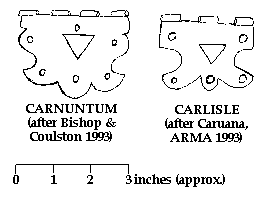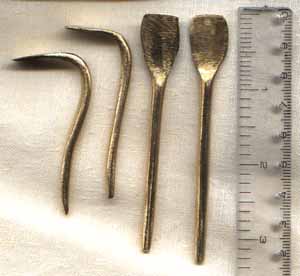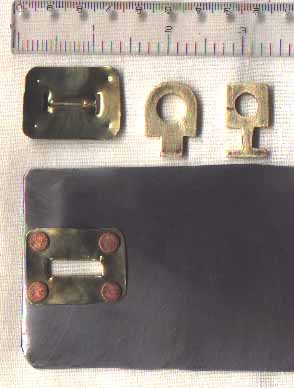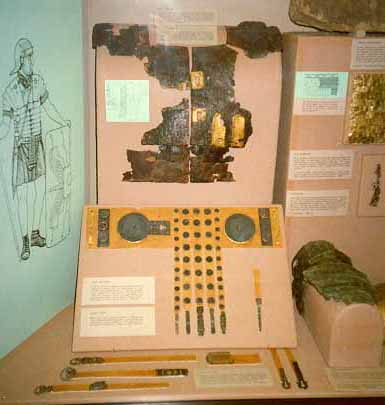The lorica pieces from Newstead are very fragmentary and incomplete. The "standard" reconstruction by H. Russell Robinson (which Museum Replicas attempts to reproduce) can no longer be considered accurate. This is not to be needlessly knocking Robinson, he did a good job with the little bits he had, but in the 26 years since his book was published a large number of significant finds have changed all previous ideas.
At right is Arick
Greenberg of Legio
VI Victrix, California, in his new Newstead lorica. Nice
work!
(Thanks to Dave Michaels for the photo.) There are details in the
Legio VI Victrix Equipment section, and also here: http://florentius.com/segmentata.htm
The surviving pieces from Newstead include most of the right backplate, two large fragments of the right breastplate, parts of the shoulder guards, and what may or may not be the ends of a couple girdle plates. The reconstructed double-width bottom girdle plate comes from a find of similar date from Zugmantel, Germany, which also produced a fragmentary breastplate. A third-century backplate was found at Carlisle in the early 1990s (ARMA, Newsletter of the Roman Military Equipment Conference, v.5#2, 1993), and in January and February of 2001 a major excavation at Carlisle uncovered an enormous amount of material, which should answer all our questions when it is finally published. For MC Bishop's tentative reconstruction of this cuirass, see http://www.mcbishop.co.uk/jrmes/j1001.htm. More information is in Volume 10 of JRMES. The latest find is from Stillfried, Austria, nearly complete left and right girdle sections.
Robinson's core idea, which is still being repeated today, is that the Newstead lorica was a "much simplified and strengthened" improvement over the previous hinged Corbridge style. But finds at Carlisle and other sites make it clear that the Newstead lorica was anything but simplified. Large lobed hinges were indeed still in use. The hinged strap and buckle fittings seem to be gone, but there are thin brass plates, often with decorated edges, around various slots and holes all over the armor, as well as brass edgings on some parts.
